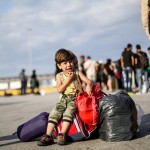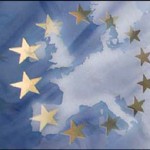Europe’s Tourism Tumbles Amid Terror Attacks, Refugee Crisis

Terror attacks, refugee resettlement and international instability have shaken up Europe’s tourism market in recent months, as American travelers benefiting from a strong dollar are picking and choosing where to vacation.
Off-the-beaten-path destinations like Bulgaria and Croatia are raking in travel revenues, while more traditional locales like France and Mediterranean destinations like Greece struggle to attract tourists.
Earlier this month, Matthias Fekl, France’s minister of state for foreign trade, the promotion of tourism and French nationals abroad, told French media that the country had seen a 10 percent drop in international travelers’ overnight stays during the first half of 2016 compared with the same period a year prior.
The news comes after a series of terror attacks over the last several months ravaged popular travel destinations like Paris and Nice. The Parisian region alone is believed to have lost out on more than $830 million in tourism revenues in the first six months of the year – a drop-off that Frederic Valletoux, head of the region’s tourism board, described as an “industrial disaster” for a tourism sector that he said accounts for roughly 500,000 local jobs.
Belgium’s tourism industry, likewise, has been left reeling in the aftermath of its own terror attacks. The Belgian media reported last month that Brussels’ hotel occupancy stood at just 62 percent in July, down from more than 75 percent a year earlier. Hotel occupancy has seen double-digit declines in every month dating back to March – when a group of attackers linked to the Islamic State launched suicide bomb attacks that killed more than 30 and left more than 300 injured.
Also complicating tourism across the continent is a massive influx of Syrian refugees that has tangibly weighed on certain countries’ travel appeal. For example, certain areas of Greece, namely the country’s Mediterranean islands, have seen international travel plummet in recent months as refugees continue to pour over Greek borders. Government statistics earlier this month showed that the number of international travelers arriving to Greece by air in July climbed 9.1 percent from July 2015. But Kos, Samos and Lesvos – the three islands “mostly affected by the refugee crisis,” according to state media – saw their international visitors plummet 13 percent, 16.3 percent and 62 percent, respectively.
Turkey, meanwhile, has had to wrestle with both terror threats and refugee resettlements as Europe’s doorstep into Syria, Iraq and the Middle East. The Turkish government recently reported that foreign arrivals in June were down more than 40 percent over the year, with annual declines becoming more prominent with each passing month. A separate report published last week by the World Travel & Tourism Council estimates the travel industry will shave 3.2 percent off Turkish economic output this year.
All told, though, the study estimates European tourism will “be challenged” by soft tourism revenues but will still grow a respectable 2.2 percent over the year. Such growth is thanks in part to thriving tourist destinations like Spain – a country that attracted more than 9.6 million international tourists last month for a 9.3 percent annual gain – and Portugal – which attracted 10.5 percent more international tourists in June and 12.4 percent more over the first six months of 2016 than it had the year prior.
“Whilst we should not downplay the impact of incidents or turmoil at [an] individual country level, on a macroeconomic level we continue to register strong growth,” David Scowsill, president and CEO of the World Travel & Tourism Council, said in a statement accompanying the report. “[Tourism] brings tremendous social and economic benefits to countries and connects people from different cultures and backgrounds.”
Interestingly, government statistics show an uptick in U.S. tourism in many of Europe’s thriving locales over the year, including Portugal (up 18.8 percent in June), the U.K. (up 9 percent in the first quarter), Croatia (up 5.6 percent in June) and Spain (up 4.4 percent in July). U.S. outbound travel statistics are only updated through April but showed travel to Europe up 13.3 percent in the first four months of 2016 compared with the year prior. No other region saw such a sizable gain in American travelers.
The growing number of U.S. citizens traveling to Europe is believed to be due in large part to the country’s low unemployment rate and steady wage gains – as well as a persistently strong dollar that gives traveling Americans an edge in terms of foreign exchange rates.
But countries like Portugal and Croatia are also benefiting from the fact that Americans are steering clear of areas that have been hit by conflict. The State Department put out a travel advisory at the end of May that specifically warned travelers to France and Poland to “exercise vigilance” and “avoid crowded places.” And a warning the department published Monday cautioned travelers to Turkey over “increased threats from terrorist groups.”
Turkey’s tourism industry, in particular, has suffered from these warnings, as Americans’ travel to the country has dropped nearly 36 percent over the year.
Source: U.S.News





























